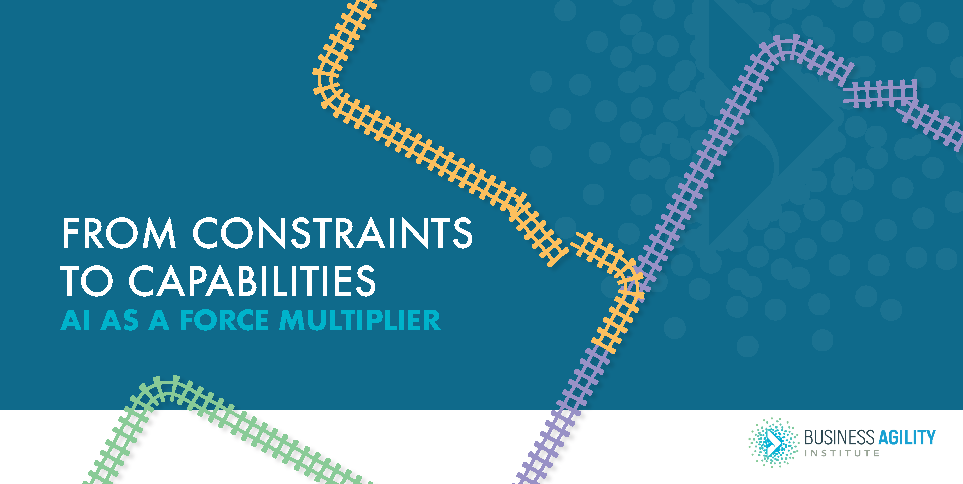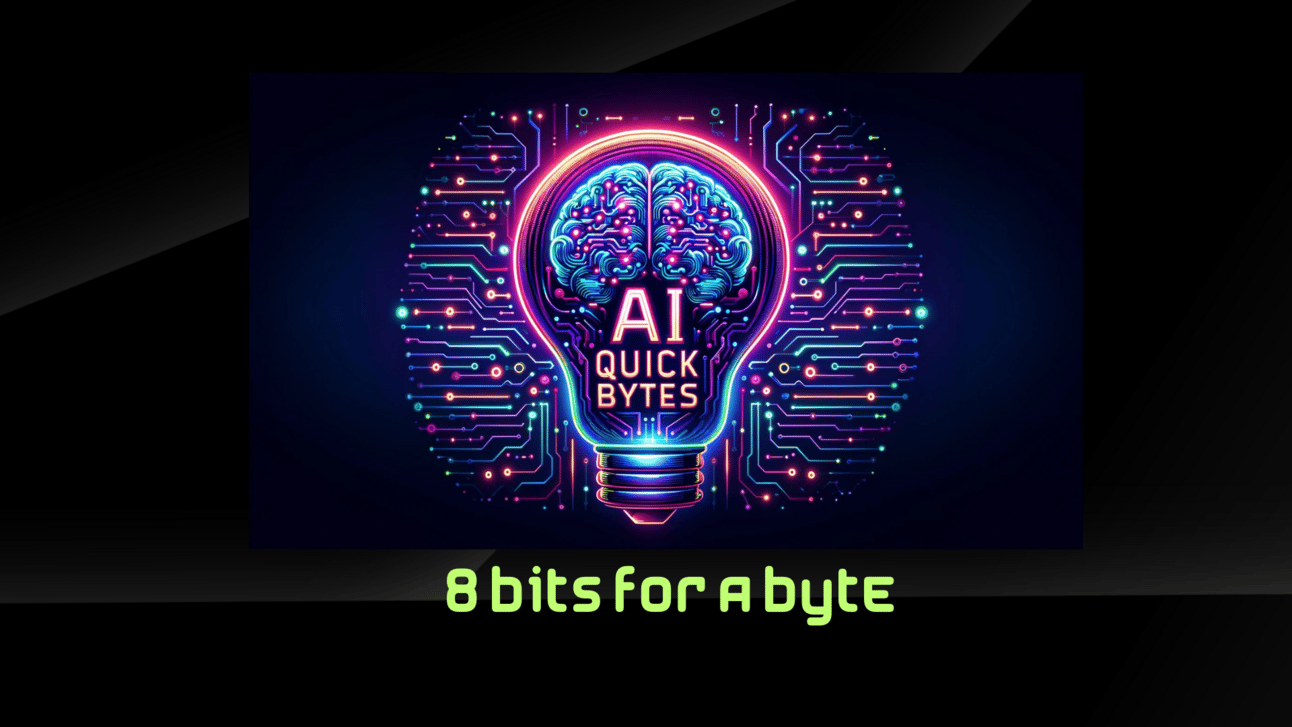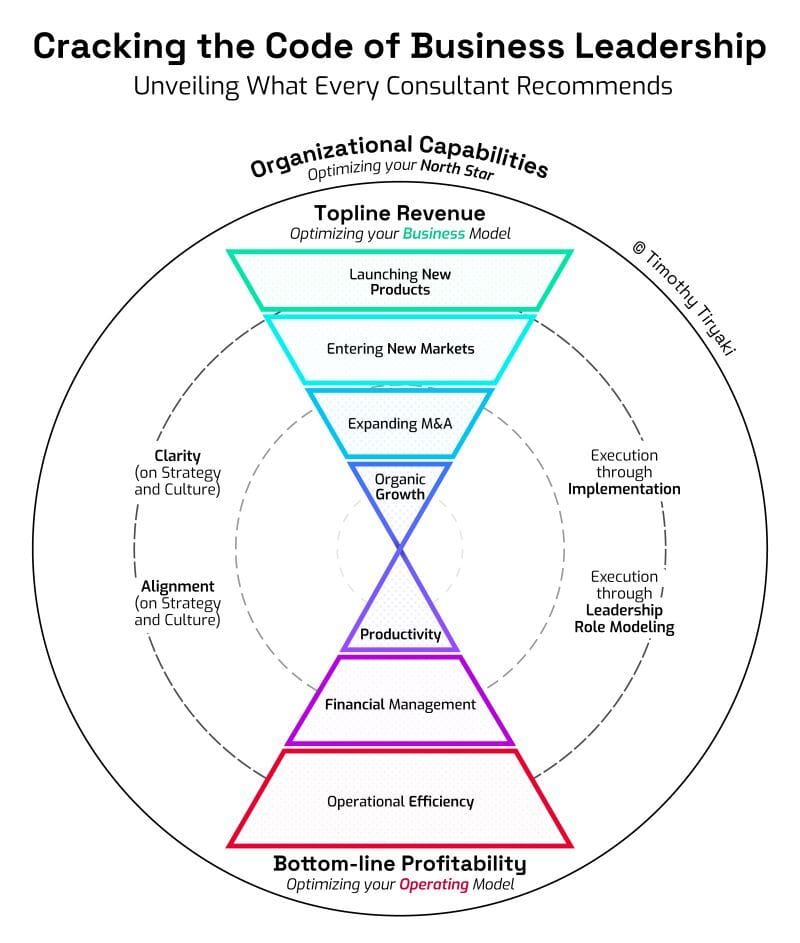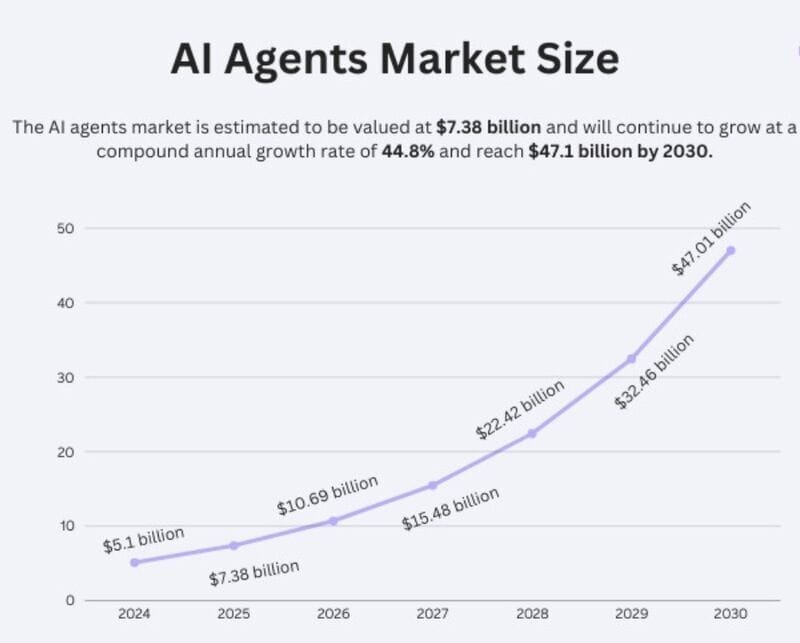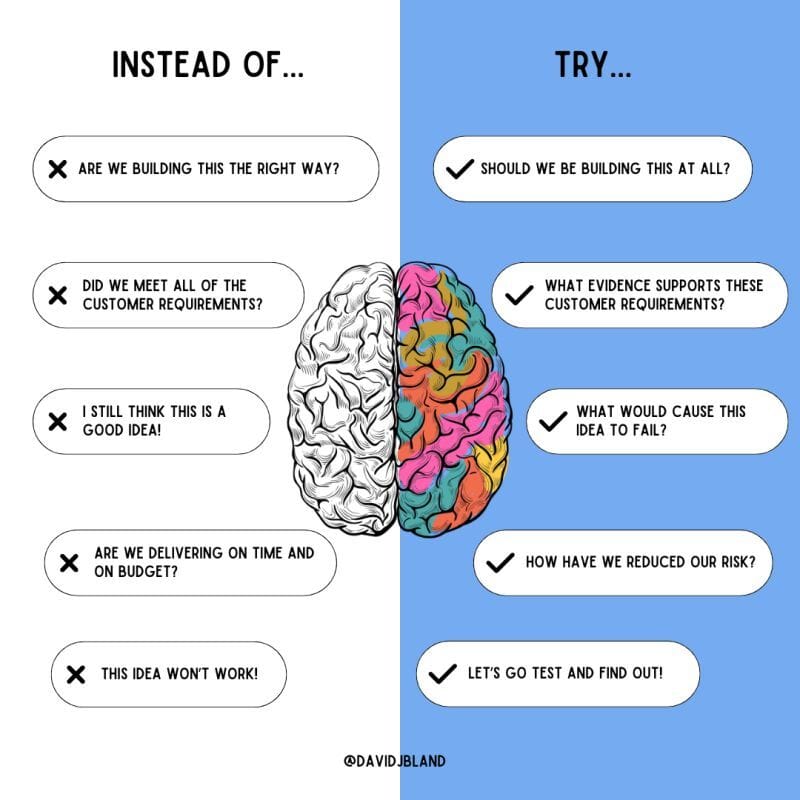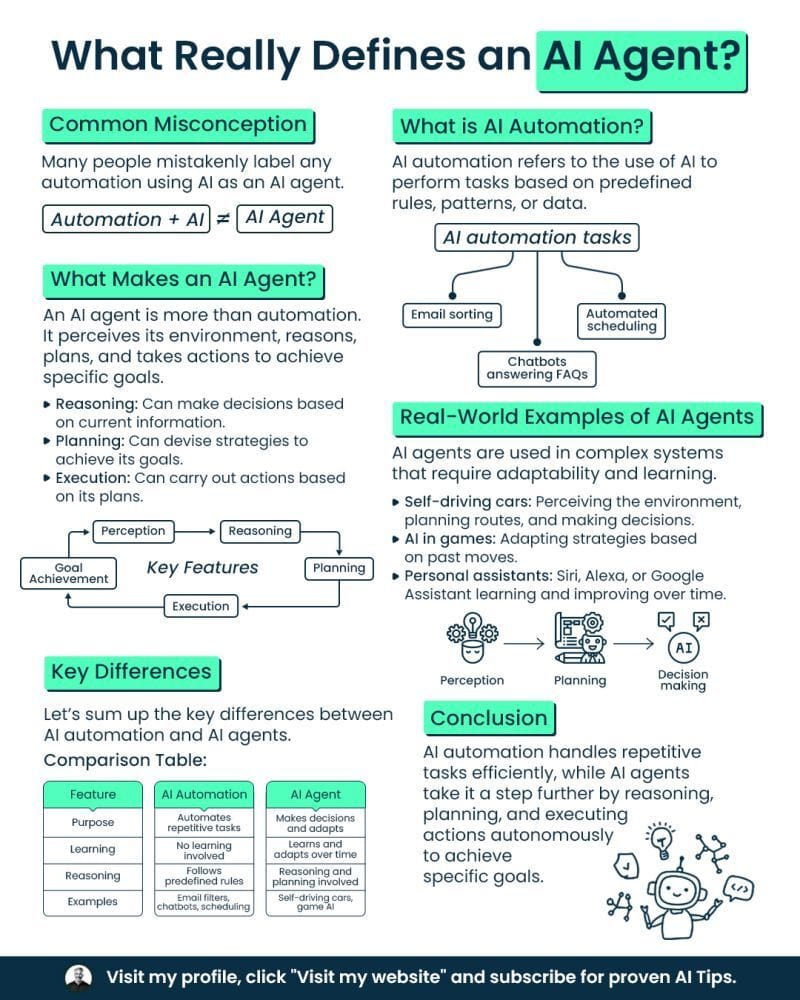8 bits for a Byte: What’s old is new again, and Paul Graham hit the nail on the head—understanding your users’ problems is everything. That applies to startups, AI, and even Business Intelligence. The problem? Too many tools, too much data chaos, and too little strategy. The solution? AI-driven insights done right. This week, we’re diving into BI evolution, AI’s biggest bottlenecks, and how AI agents are quietly reshaping industries. Let’s get to it!
What’s old is new again and Paul Graham hits the nail on the proverbial head when he snarkley shares that understanding our users’ problems has and continues to be the most important component of starting a startup or IMHO creating any product.
Here’s Why Over 4 Million Professionals Read Morning Brew
Business news explained in plain English
Straight facts, zero fluff, & plenty of puns
100% free

Let’s Get To It!

Welcome, To 8 bits for a Byte!
Here's what caught my eye in the world of AI this week:

The Evolution of BI & the AI-First Future
.
Bit #1: Business Intelligence Never Stands Still
BI has evolved from rigid IT-controlled systems to flexible, self-service tools—and now, AI-driven analytics. Each wave solved old problems while creating new ones. The challenge today? Too many tools, inconsistent data, and a struggle between governance and self-service.
.
🔹 BI has gone through four major phases—legacy BI (1990s), self-service (2000s), governance-focused (2010s), and AI-driven (2020s).
.🔹 Modern BI tools are fragmented, forcing companies to use multiple platforms for governance, exploration, and modeling.
.🔹 AI is entering BI, but without structured business logic, it struggles to deliver meaningful insights.
.
💡 Actionable Impact:
Leaders should evaluate BI solutions that balance governance with flexibility. Look for AI-powered BI tools that integrate deeply with data models like dbt to maintain accuracy while enabling self-service insights..
Bit #2: 1990s – The Legacy Era of BI
BI in the 90s was slow, expensive, and IT-controlled, relying on tools like SAP BusinessObjects, IBM Cognos, and Oracle BI. Reports were pre-aggregated in OLAP cubes, making changes time-consuming and inflexible.
.
🔹 Strength: High governance and structured reporting.
.🔹 Challenge: High costs, slow report generation, and dependence on IT for insights.
.🔹 Reports were often outdated due to overnight ETL processes, limiting real-time decision-making.
.
💡 Actionable Impact:
If your organization still relies on legacy BI, it’s time to modernize. Moving to cloud-native BI platforms enables real-time analytics, scalability, and faster decision-making..
Bit #3: 2000s – The Self-Service Revolution
BI tools like Tableau, Power BI, and Qlik democratized data access, allowing business users to analyze data visually—no IT required.
.
🔹 Strength: Faster insights and intuitive interfaces.
.🔹 Challenge: Data chaos—no centralized governance led to conflicting reports.
.🔹 Data extracts often became outdated, causing inconsistencies across teams.
.
💡 Actionable Impact:
If self-service BI led to data silos in your company, implement centralized data governance using modern modeling layers like dbt or LookML..
Bit #4: 2010s – The Return of Governance & Modern Data Modeling
With cloud data warehouses like Snowflake and BigQuery, BI shifted toward governance-focused platforms like Looker. dbt emerged as a key transformation tool, enabling SQL-based data modeling.
.
🔹 Strength: Centralized governance and scalable cloud analytics.
.🔹 Challenge: Bottlenecks—data teams controlled models, slowing self-service.
.🔹 Companies adopted hybrid BI workflows, mixing dbt, Looker, Tableau, and Sigma.
.
💡 Actionable Impact:
If BI feels fragmented, consolidate workflows by defining clear governance policies and choosing BI tools that integrate directly with your transformation layer..
Bit #5: 2020s – The AI-First BI Landscape
BI today is fragmented, with companies using multiple tools for different needs—leading to inefficiencies. AI is emerging as a game-changer, but without structured business logic, it falls short.
.
🔹 Strength: AI-powered analytics, automation, and embedded intelligence.
.🔹 Challenge: Too many BI tools, inconsistent metrics, and lack of a single source of truth.
.🔹 Traditional BI vendors (Looker, Tableau, Power BI) have slowed innovation due to acquisitions.
.
💡 Actionable Impact:
Look for BI platforms that unify governance, flexibility, and AI-driven insights, reducing reliance on multiple tools while maintaining accuracy..
Bit #6: The Rise of Next-Gen BI Vendors
New players like Omni and Inventive are addressing BI’s biggest challenges—merging governance with AI-powered automation.
.
🔹 Omni combines deep data modeling with self-service, enabling flexible, governed analytics.
.🔹 Inventive is revolutionizing embedded analytics with AI-powered agents that automate report generation and customer interactions.
.🔹 Both are reshaping BI by integrating with modern data stacks (dbt, cloud warehouses) for seamless workflows.
.
💡 Actionable Impact:
Explore emerging BI solutions that consolidate analytics, reduce SQL dependency, and enhance AI-driven decision-making..
Bit #7: AI is Transforming BI—But Needs Structure
Text-to-SQL and AI copilots are making BI more accessible, but they rely on structured business logic to provide accurate insights.
.
🔹 AI can automate data queries, but without a well-defined data model, results may be inconsistent.
.🔹 Governance remains critical—AI should assist decision-making, not create data chaos.
.🔹 The future of BI blends AI-powered automation with strong data modeling to ensure trustworthy insights.
.
💡 Actionable Impact:
Ensure your AI-driven BI tools are backed by a structured semantic layer to maintain data accuracy and consistency..
Bit #8: The Future of BI – AI-First, But Governed
BI is shifting towards AI-driven automation, but structured data models remain essential for reliable insights. The leaders behind Looker’s success are now building the AI-first BI era, ensuring governance doesn’t get left behind.
.
🔹 AI is making BI more intuitive, but unstructured AI-driven queries risk generating misleading insights.
.🔹 The next generation of BI will integrate AI with strong governance, enabling both automation and accuracy.
.🔹 Companies that adopt AI-first BI while maintaining data governance will gain a competitive advantage.
.
💡 Actionable Impact:
Adopt BI solutions that prioritize AI-driven insights and structured governance—ensuring both speed and accuracy in decision-making..
Final Thought: The future of BI isn’t just AI—it’s AI + structured data. Leaders who embrace AI-powered governance will drive the next wave of data-driven success.

Quote of the week
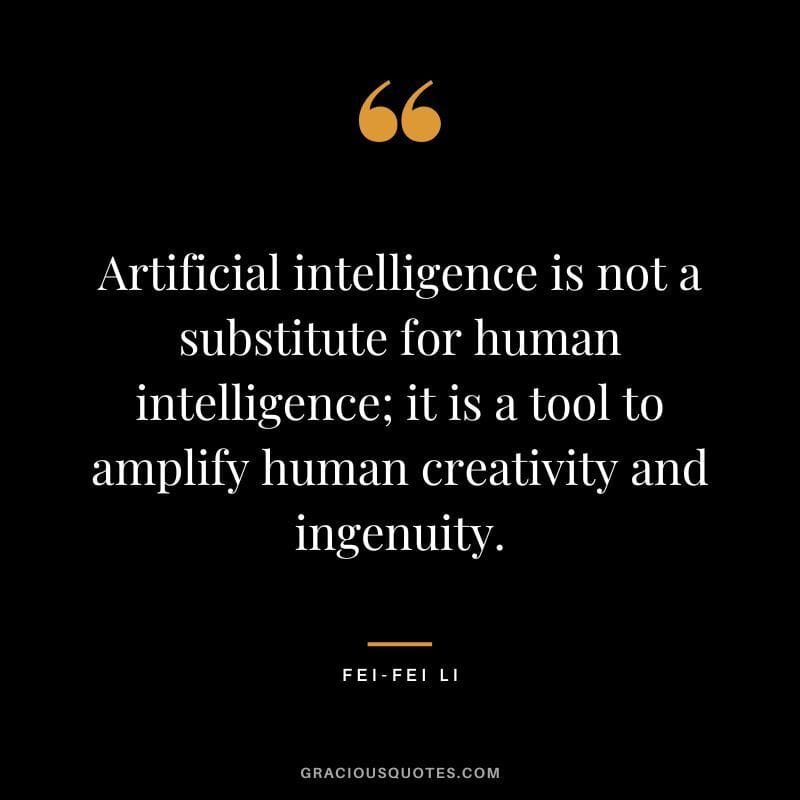
I deeply resonate with this quote from Fei-Fei Li — it perfectly captures the essence of how AI should be approached. AI is not here to replace human intelligence but to enhance it, serving as a powerful tool to amplify creativity, problem-solving, and innovation.
.
This understanding is crucial for successfully implementing AI solutions for customers. Too often, organizations view AI as merely an automation tool, missing its potential to unlock new opportunities, insights, and human potential. When we integrate AI thoughtfully—aligning it with our values, strategy, and vision—we don’t just optimize processes; we empower people, foster innovation, and drive meaningful transformation. AI, when used right, is not just about efficiency—it’s about elevating human ingenuity to new heights.

I love the clarity and structure in Timothy T Tiryaki, PhD breakdown! He has distilled the essence of business leadership into a strategic framework that is simple, actionable and insightful.
A few thoughts:
1️⃣ The North Star as a Competitive Advantage – Many organizations chase revenue and profitability but neglect the organizational engine that sustains them. Companies that invest in culture, leadership, and systems thinking often outperform competitors in the long run.
2️⃣ AI as an Enabler Across All Three Areas – AI isn’t just for optimizing operations (bottom-line growth); it’s also transforming business models (top-line growth) and reshaping leadership and culture (organizational capabilities). Strategic AI adoption could be the key to full integration.
3️⃣ From Systems Thinking to Systems Being – Love this phrase! It highlights that leadership isn’t just about understanding complexity but embodying it. The best leaders don’t just "manage" systems—they create an ecosystem where strategy, people, and performance thrive together.
Curious—how do you see AI playing into the development of organizational capabilities? Many leaders see AI as just an efficiency tool, but I think it can be a powerful enabler of leadership and culture too.

Organizations are increasingly investing in AI to enhance operations and boost business outcomes. However, many struggle to realize AI's full potential due to bureaucratic constraints and skill gaps. Emphasizing collaboration between AI and human workers can unlock greater efficiency and innovation.
Bit: Why isn’t AI delivering its full promise?
AI is a game-changer, but many organizations fail to realize its full potential due to bureaucracy, skill gaps, and outdated workflows. Instead of replacing humans, AI should act as a force multiplier, amplifying human capabilities and accelerating business outcomes.
Key Takeaways:
🔹 Augmentation, Not Automation – The most successful AI implementations enhance human work rather than replace it. Organizations focusing on AI to reduce headcount often see low ROI.
🔹 AI Multiplier Effect – AI can increase efficiency and innovation by 1.2x to 3.2x, but only if businesses remove organizational constraints like slow decision-making and rigid budgeting.
🔹 Overcoming Barriers – Common AI roadblocks include poor data quality, excessive bureaucracy, lack of AI trust, and skill gaps. Fixing these allows AI to drive real business value.
Action Plan: What You Can Do Today
✅ Help Employees Work Effectively with AI – Invest in AI training, including prompt engineering and AI-augmented decision-making.
✅ Fix Workflows to Remove AI Barriers – Identify bottlenecks like slow approvals and rigid processes that prevent AI from scaling.
✅ Adopt Agile Funding Models – Move beyond static budgets and enable dynamic funding to quickly seize AI-driven opportunities.
Final Thought: AI isn’t a magic fix—it’s a tool. Organizations that optimize workflows, empower employees, and rethink governance will unlock AI’s true potential. Are you ready to compete at the speed of AI? 🚀
The Business Agility Institute (BAI) is a pioneering research and advocacy organization dedicated to transforming businesses for the future. With a strong emphasis on agility, innovation, and human-centric leadership, BAI empowers organizations to thrive in uncertainty and drive meaningful change. At the helm of this movement are visionary leaders like Evan Leybourn, Christopher Morales, and Laura Powers, who bring deep expertise in digital transformation, leadership, and agile business practices. Their commitment to research-backed insights and real-world application helps companies break free from outdated models and embrace customer-driven, adaptive strategies. BAI is not just an institute—it’s a global community of forward-thinking leaders, shaping the future of work with bold ideas, actionable strategies, and a relentless focus on business agility.

Make Mealtime Easy with Huel
Packed with 40g of protein & 27 essential nutrients
Fast & convenient for the busiest days
8 delicious flavors including Chocolate, Cookies & Cream, and Coffee Caramel
Get 15% off your first order, plus a free t-shirt and shaker with code HUELBE15

The Rise of Agentic AI: A $47B Market in the Making
The AI Agents market is on a meteoric rise, projected to grow from $7.38 billion today to $47.1 billion by 2030. But where is this explosive growth coming from?
.
Key Takeaways:
.
🔹 Autonomous AI Agents Are Reshaping Work – AI agents are moving beyond chatbots. They’re executing tasks, making decisions, and orchestrating workflows across industries like finance, healthcare, and customer service.
.
🔹 Enterprise Adoption Is Surging – Companies are embedding AI agents into operations, from automated customer support (think AI-driven call centers) to autonomous sales assistants that personalize outreach at scale.
.
🔹 New Revenue Streams Are Emerging – As AI agents handle complex tasks like coding, research, and legal review, businesses are finding new ways to monetize efficiency, reduce costs, and create data-driven services.
.
Actionable Impact:
.
AI Agents aren’t just hype—they’re a strategic imperative. Leaders should explore how autonomous AI can enhance productivity, improve decision-making, and open new business models. Time to test, iterate, and integrate before the market races ahead!
.
Thank you Joao Moura for the graphic!


Friday Funnies 🤣 .
The future of AI leadership will be shaped by trust. The companies that earn and maintain customer confidence will be the ones that thrive. Which AI-driven or established brands have earned your trust? Share your thoughts in the comments!

Block has launched goose, an open-source AI agent framework that connects large language models (LLMs) to real-world tasks. Designed for interoperability and automation, goose is already freeing up developer time and is poised for broader applications beyond software engineering.
🔹 Key Takeaways:
Interoperability First: goose bridges LLMs with real-world systems via Anthropic’s Model Context Protocol (MCP), enabling seamless AI integration.
Real AI Autonomy: goose goes beyond code generation—it executes tasks, modifies files, and automates workflows.
Open Source Power: Released under Apache License 2.0, goose invites the developer community to expand its capabilities across industries.
🎯 Action Step: Explore goose and consider how AI agents could automate repetitive tasks in your workflow. Want to contribute? Join the developer community and shape the future of AI-powered automation!

Learn how to make AI work for you
AI won’t take your job, but a person using AI might. That’s why 1,000,000+ professionals read The Rundown AI – the free newsletter that keeps you updated on the latest AI news and teaches you how to use it in just 5 minutes a day.

Strategic Mindset
I had the chance to organize a book club on Testing Business Ideas, led by none other than David Bland himself. Total game-changer! It opened my eyes to just how efficiently—and affordably—you can test ideas before going all in.
This is a fantastic framework for resilient leadership! It highlights the shift from execution-focused thinking to outcome-driven decision-making. Here are three key takeaways that reinforce the importance of digging deeper:
Key Takeaways:
🔹 Challenge Assumptions – Don’t just build what was requested; question if it should be built at all. The real risk isn’t execution—it’s irrelevance.
🔹 Validate with Evidence – Customer requests should be examined through the lens of actual needs, not taken as orders. Seek proof, not just opinions.
🔹 Measure the Right Things – Success isn’t just hitting deadlines and budgets. Reducing risk, learning faster, and making better bets drive long-term impact.
Actionable Impact:
Shifting your team’s mindset from "Are we doing this right?" to "Are we doing the right thing?" is a critical mindset in the 21st century that corporations must have to win the AI battle. Winning organizations will thrive on evidence, adaptability, and smart risk-taking. 🚀

Until next time, take it one bit at a time!
Rob
Thank you for scrolling all the way to the end! As a bonus check out.
.
P.S. Think of this like tipping your AI bartender—except instead of drinks, we serve up cutting-edge AI insights. Support AI Quick Bytes by subscribing to the below top-tier newsletters, curated by a highly sophisticated algorithm (okay, fine, it was just me with a lot of coffee).
Subscribe now for free and never miss out on the best content across the web!

